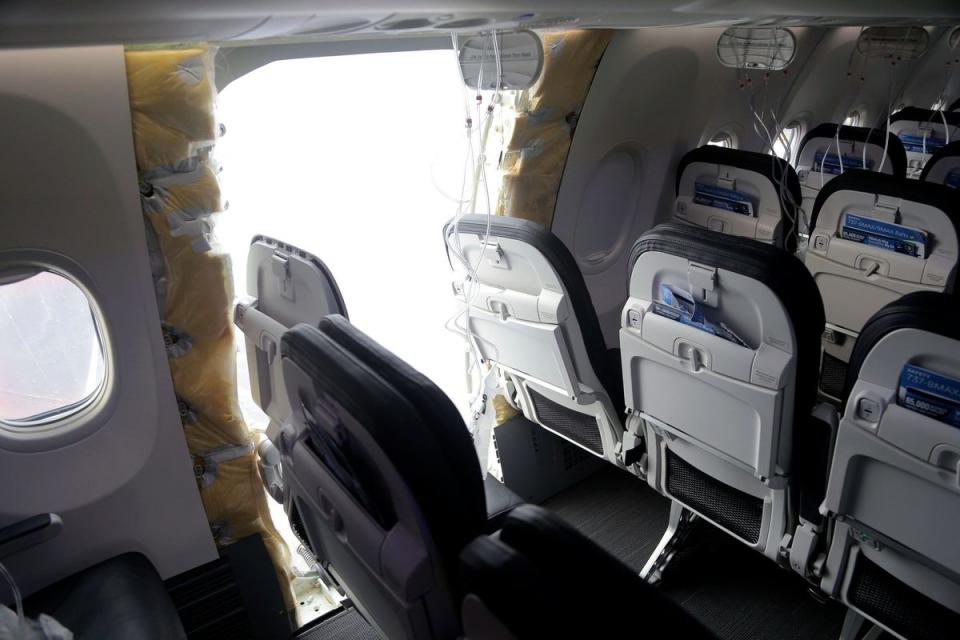Boeing’s CEO acknowledged the company’s mistakes after a panel exploded in mid-air during an Alaska Airlines flight, saying it will “never happen again.”
More than 170 Boeing 737 Max 9s remain grounded in the United States after last week’s incident, which occurred mid-flight and left passengers fearing for their lives.
At a public meeting at Boeing’s Renton, Washington, factory, top company officials said it recognized the “real severity of the accident” by initiating reviews of its quality controls.
Chief Executive Dave Calhoun said he had been “shaken to the bone,” and pressure mounted on Boeing after two airlines said Tuesday they discovered “loose” bolts on some of their 737 Max 9s after inspections. .
“We’re going to address this, first and foremost, by acknowledging our mistake,” Calhoun told employees, according to an excerpt released by Boeing.
“We’re going to approach it with 100% and complete transparency every step of the way.”


Alaska Airlines and United Airlines, the two U.S. airlines using the temporarily grounded planes, found loose parts on similar planes, raising fears that a similar incident may have happened again.
Calhoun also told Boeing employees that the company would “make sure that every next plane that takes to the sky is safe.”
He praised the Alaska Airlines crew who quickly landed the plane, with only minor injuries to the 171 passengers and six crew members.
Boeing declined to comment on Calhoun’s remarks beyond the official statement.
Some industry leaders have privately criticized Boeing for not grounding its planes more quickly on Saturday.
Sources cited by the AP news agency said Boeing had been drawing up plans to order inspections when the Federal Aviation Administration (FAA) intervened with an emergency order to ground the planes.
Boeing had already suffered numerous production problems due to a broader grounding of the 737 Max family in March 2019, after two fatal crashes killed 346 people.
Both accidents were caused by faulty software in the planes, which forced them into a nosedive, despite the pilots’ best efforts.

